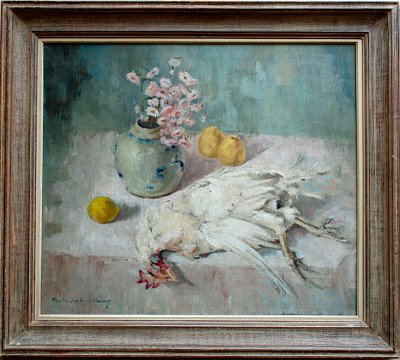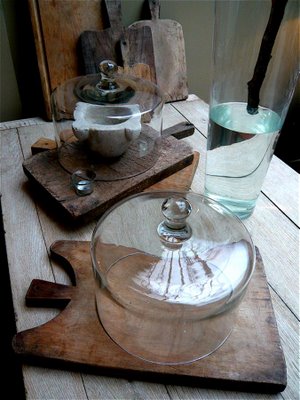Posts from the ‘muse’ Category
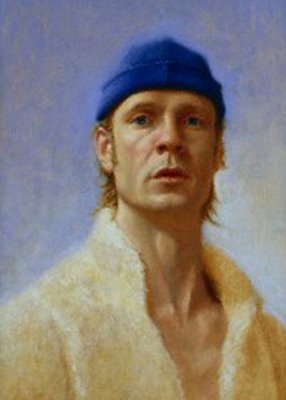
Winter Portrait by Ingolv Helland © the artist
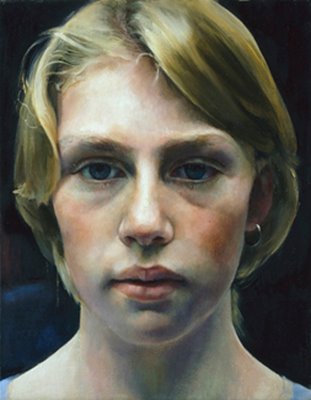 Seraph by Celia Bennett © the artist
Seraph by Celia Bennett © the artist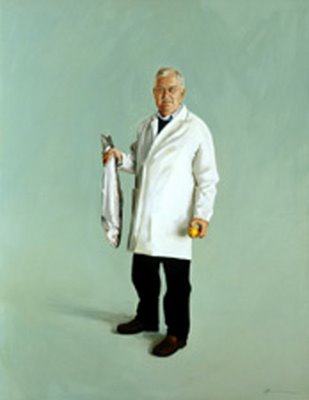 Walter by Oliver Jeffers, 2008 © the artist
Walter by Oliver Jeffers, 2008 © the artist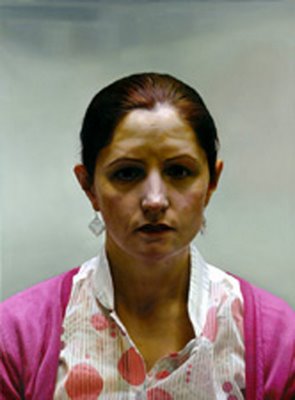 K by Craig Wylie © the artist
K by Craig Wylie © the artist
It happens to me often. I say something and the thing I wonder about is right next to me. I might say it has do to with the alienating phenomenological veil of LA so that I do not recognize the thing next to me. That veil created by moments like when I am sitting at my desk and someone happens by–a weird incongruity of imagination and reality–am I suppose to know you? Have we met before? Sometimes I wonder who invited me and turned on the T.V. in need of a subtle (or not so subtle) confirmation of acknowledgment; surreal but still enjoyable giving more fodder for lunch conversation. Here under the sun, or even when it is uncomfortably unsunny, one’s everyday thoughts do not seem to expand, develop, increase beyond a half witted bon mot or HEADLINES to move to some kind of a conclusion or even resoluton! –as this blog can as well attest–thoughts meander in an unstructured slothfulness.
So to point out what was next to my post PORTRAIT— The National Portrait Gallery (like Riverside Dr. being next to a river)– to The BP Portrait Awards 2009. It answers the question, Where have the portrait painters gone? The answer: apparently they never left home.
“…she was positively, richly attractive in her grand ampleur. She always seemed to like her own fat anyway and that usually helps other people to accept it. She had none of the funny embarrassment Anglo-Saxons have about the flesh. She gloried in hers.” Mable Dodge on Gertrude Stein.
When all is tedious and nothing, beyond Susan Boyle, has sparked my imagination (although she too has begun to wane) I shall look to the great St. Gertrude.
In 1933 The Autobiography of Alice B. Toklas was published which made Miss. Stein famous especially in America where it was a best seller. After having spent most of her adult life in Paris, Gertrude took her first trip back to the states with Alice to go on a lecture tour having been gone for 30 years. It was 1934.
Gertrude loved the monotony of the everyday. She liked daily habits, walks around Paris, and loved her Standard Poodle, Basket. She liked Basket so much in fact that when Basket died, Basket II arrived, soon after. In this first photo we see Alice and Gertrude sitting in their salon at 27 Rue de Fleurus. A domestic scene, a photo that is my reference for when I hear the term “salon style” used as it relates to the arrangement of art.
There are a handful of Cecil Beaton photos at the National Portrait Gallery. Since they will only allow their use for a fee, you will have to see the photographs on your your own: links one and two.
In image ONE we see Gertrude and Alice and their Standard Poodle, Basket. This photo is taken in 1936. We know this is Basket because he died in 1937 after which came Basket II. We imagine Gertrude not wanting to have to switch from, “Come Basket!” on her way out the door.
The room is lofty. A fireplace off to the side. Gertrude is captured with her hand on Basket as if to get him to behave, to sit. Alice looks on slightly amused perhaps at Basket misbehaving. There are four paintings vertical in the background, a bowl in the forground, could it be called a “tiered tazza” perhaps just a scalloped bowl with handle, ready to be picked up with the offer of nuts. The room is spare, as if they have yet to unpack, as if they have just moved and Alice has just made it tidy for the photo.
In image TWO we see Gertrude looking gruff. Did they put Basket in the other room? Note that the door is now shut. Alice is gently in the background, smiling and gazing over to Gertrude. There is a fantastic lamp with a wonderfully oversized lampshade in a diamond pattern that feels like Bloomsbury, the Omega Workshop. There is another scallop motif this time a planter on the desk next to the lamp.
This is a richer home than the salon at 27. The grand rolled arm sofa–large enough to hold Ms. Stein in what looks like a strie velvet. But they both appear as if they are just borrowing the room, and a bit uncomfortable, as if it is a hotel. But the art seems like theirs although I do not know the nude in the background.
It makes me wonder if the photo was mislabeled, that this is perhaps 1937, after Basket died and after their landlord refused to renew the lease at 27 and they moved to an apartment on Germain. Perhaps it is 1937, if it is, they won’t have been here long, they will spend the Second World War, at their country house in Bilignin.
Who wouldn’t want a painting of a dead chicken? I can’t quite remember where I read that what human beings have to resolve for themselves is that to live, something has to die. Being removed from the killing is always easier and cleaner. I recall someone else, (maybe Timothy Leary) said that both cows and cabbage scream–it’s just that cows are louder.
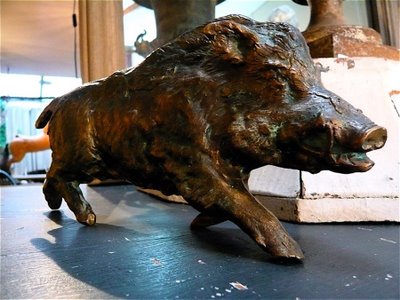 Bronze wild-boar. 20th c. France.
Bronze wild-boar. 20th c. France.
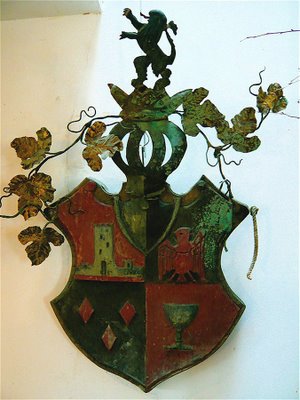 Coat of arms in wood and polychrome embossed with copper. 19c Italy.
Coat of arms in wood and polychrome embossed with copper. 19c Italy.
The color swatches are my tinkering with the colors from a recent outing. We can call it a color narrative. From left to right: Peri-Blue, Lino Green, Samarkand Rose, Cash Register Gray & Froggy Yellow.
These go far into the dusty muted colors of the Omega & Bloomsbury which I have been loving recently as opposed to the bright not unlike Easter colors of the Shanghaiese restaurant (I’m told if you are in the know it is referred to as Wu Cuisine which is the regional name in the classic tradition) It was last Friday evening and I was in Monterey Park. The restaurant was painted two colors that although at odds with each other somehow worked. The space felt soft, relaxed and fresh even with all the tables full and staff running about.
The industrial works at the lofty ceiling had been painted out a periwinkle blue which wrapped down the walls about three feet. Below the walls were soft lavender. The floors had an industrial dark gray green carpet and the benches in the waiting area were upholstered in mint green vinyl. White commercially laundered tablecloths were on round tables that were packed comfortably together. The colors help to set off the colors of our food like the orange of the pumpkin and glutinous rice cakes the pink of the shrimp and the bright green of the loofa.
On the walls, decoration, the tiered red and gold printed Chun Lian were hanging from the ceiling welcoming the Spring and there was an appropriate amount of beaded screens made out of some kind of faux raffia in bright orange and hot pink at the door openings, as if someone might have said about their placement, “They will visually screen the dining room but not make the space feel heavy.”
The standard-light-bulb-shaped-pendant fixtures were spaced out evenly on a grid pattern and the bright whiteness of the glow matched the rice cakes. The whole place had a delightfully non existent approach to “art” and in the toilet there was a surprising lack of granite of juxtaposed colors that seem to be favored in many of the restaurants that I have visited in Monterey Park.
Speaking of public relations, there is a a BBC documentary called The Century of Self that starts with Edward Bernays and the development of the Public Relations industry which makes one very much question why we believe anything that we hear on TV–or the internet. That said, it’s the little summing up that I find interesting because it’s always the important details that are left out about how I got from here to there (did you walk? Take a cab? Wait for the bus?)
It’s like reading a short story. Joan Didion said something about short stories. It was something like that the reason she didn’t write short stories, is because she didn’t believe in that epiphany the protagonist has in a short story. She says that it doesn’t happen that way in real life. Life is not just one way–something happens– and we are forever another way.
Further, I love the odd reminiscences we have on our lives. Things can get so condenscend and thick with just a phrase. One of my favorite is from a woman I knew in London who worked in a shop and once apropos of nothing, she looked down at me (she was very tall) and in her ponderous rhythmic voice. Her black sunglasses reflecting the track lighting:
She had been a model, before there were Models she would generally arrive late, and seemingly a little tipsy after lunch. But that was London. Everyone is a little tipsy in London after lunch.
Back to Marsia Hozer. She also is quoted as saying one of the most brilliant things I’ve heard in a very long time.
“Don’t think too much. Keep your mind quiet and if something pops into your mind just do it.”
Which is how this got written. I really do love this apartment.
**All photos from David Patrick Columbia’s New York Social Diary.




Inspiration is as easy as action is difficult. Action takes effort. Just as it is easy to talk about how our new president inspires us, it is an entirely different thing–a momentous individual leap forward with no guarantees–to take action out of that inspiration.
There was a cat named Loki and a preoccupation with a guy named Thomas. I was casting a lot of runes. When I found Loki on my front step, he had a slight limp and for the first month or so he hobbled around and it seemed like I had a mechanical wind up toy for a pet. Later as he healed, Loki would try to escape to join the other three or four neighborhood cats that lined up on the sidewalk to meow at him. Loki would run circles around the living room, ending and starting on the back of the futon to meow back down at them. Loki had a name change to Carlyle Cat in the hopes of mellowing him out. We moved to a studio apartment to the Northside, a block from the beach. At first Loki made failed attempts at escape via the third floor balcony which would end with him on a ledge meowing loudly and then he eventually escaped to a farm downstate.
My father liked to say that it might be worth something some day–you better keep it! Now, Christie’s is showing you that some of it is. The first Punk/Rock auction of memorabilia was held on November 24, 2008 in New York.


